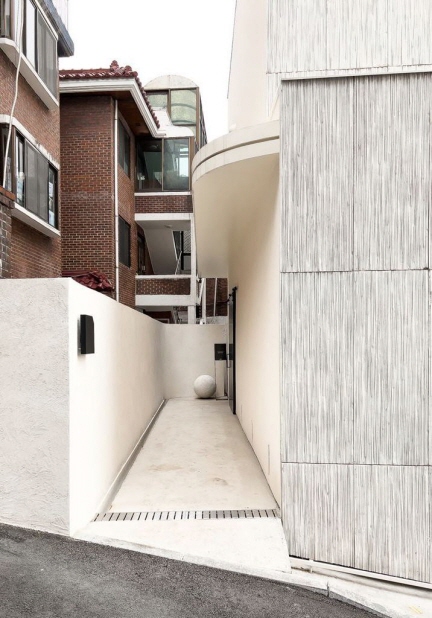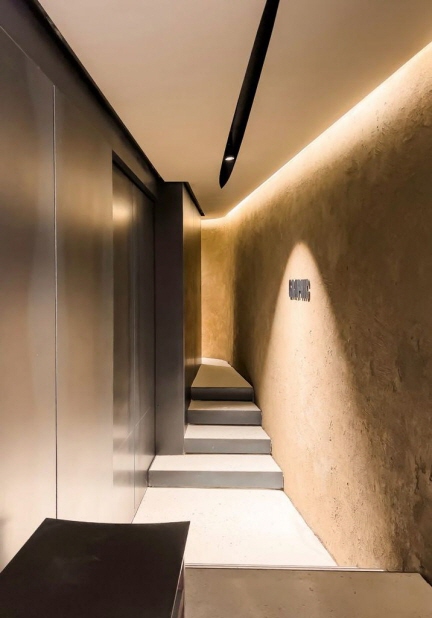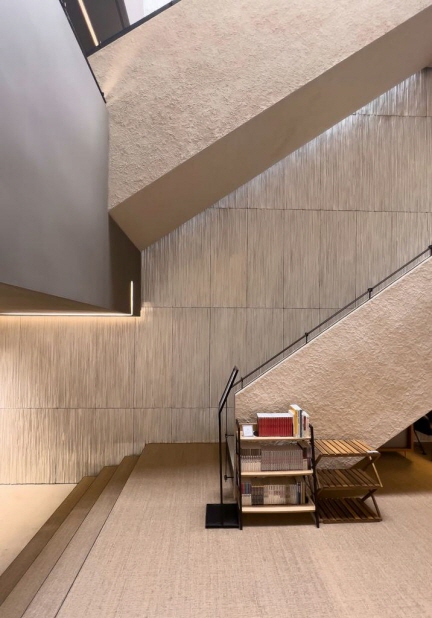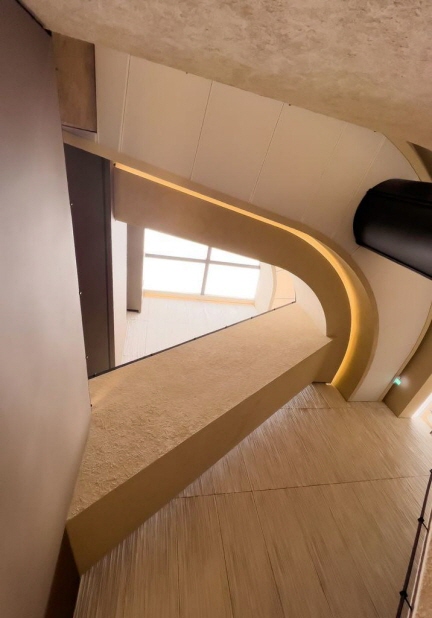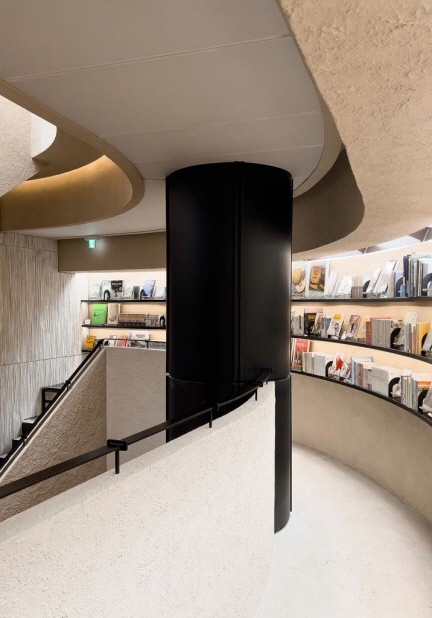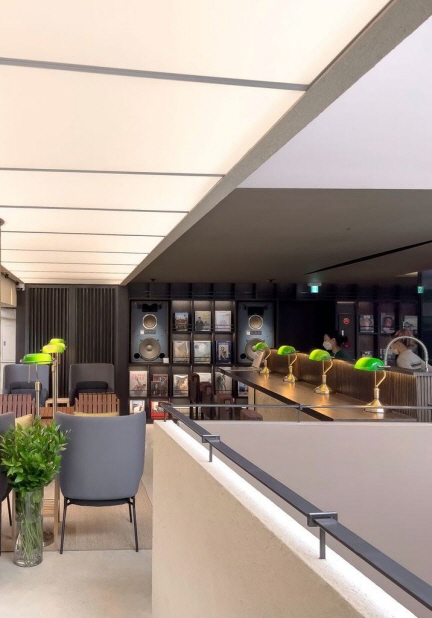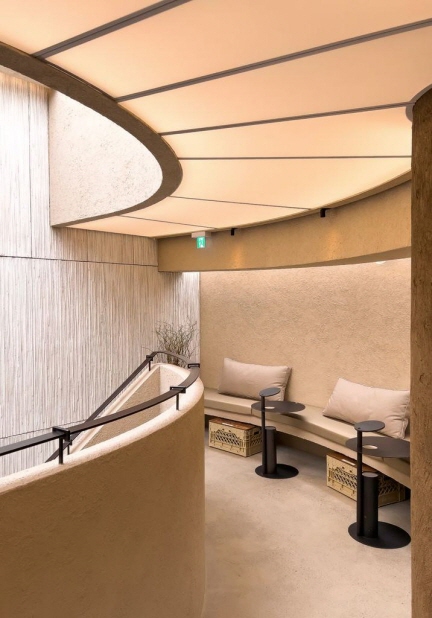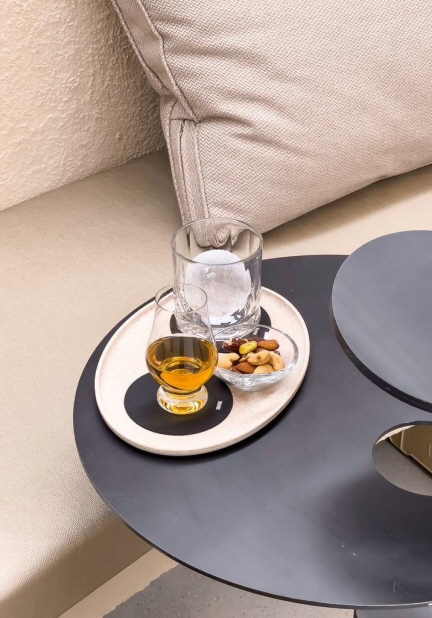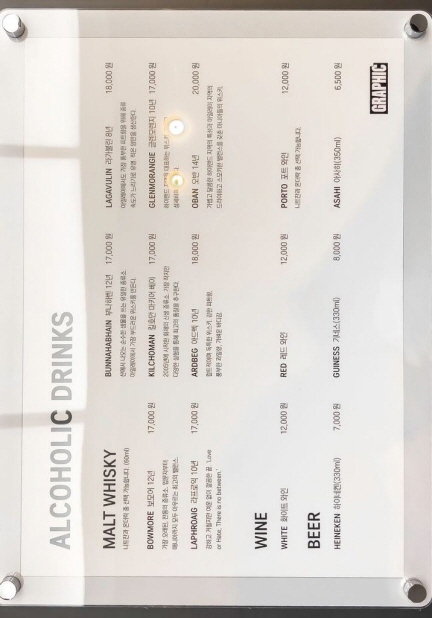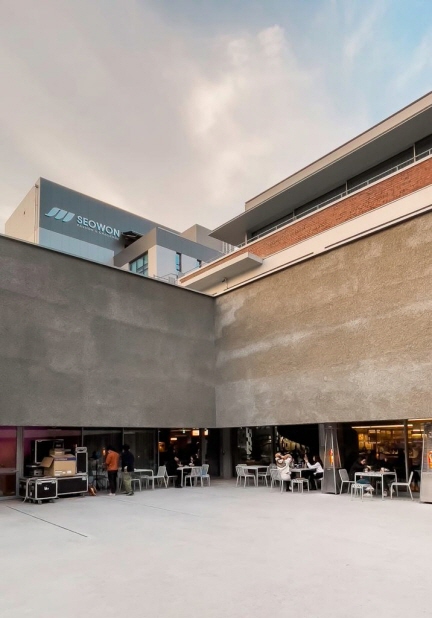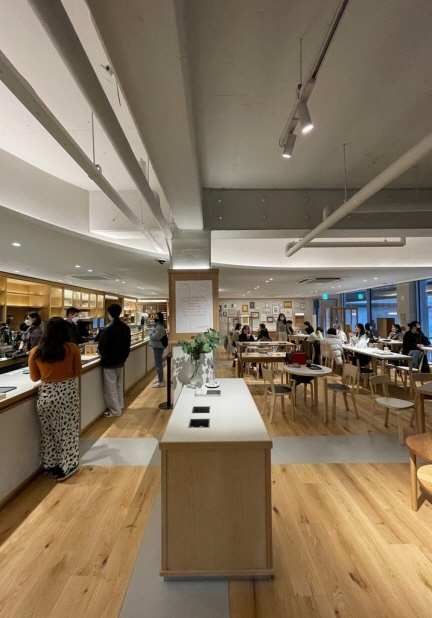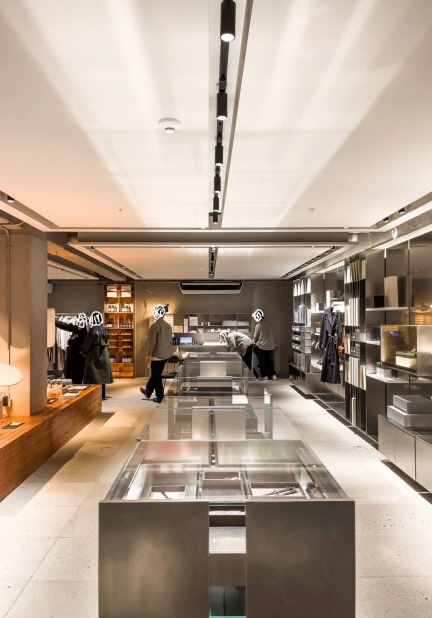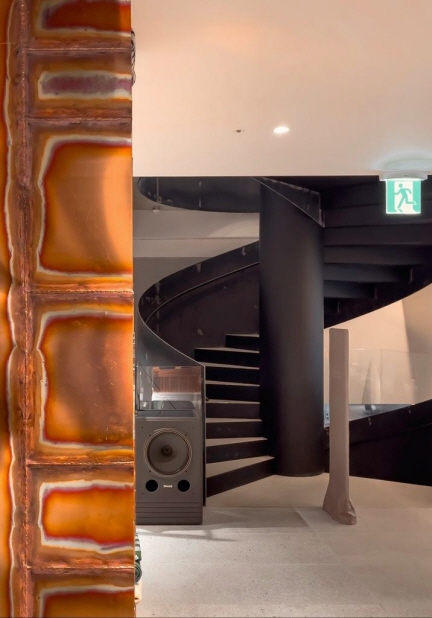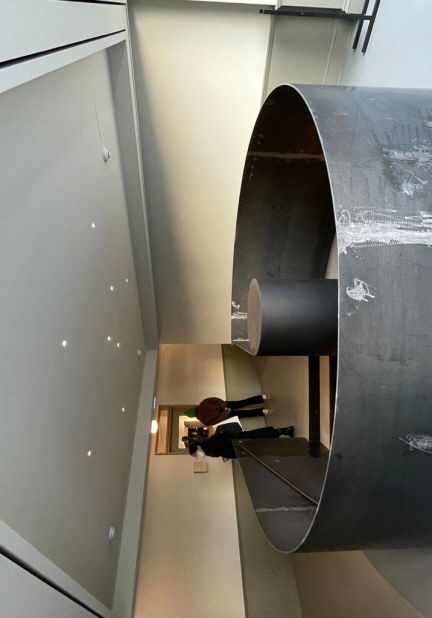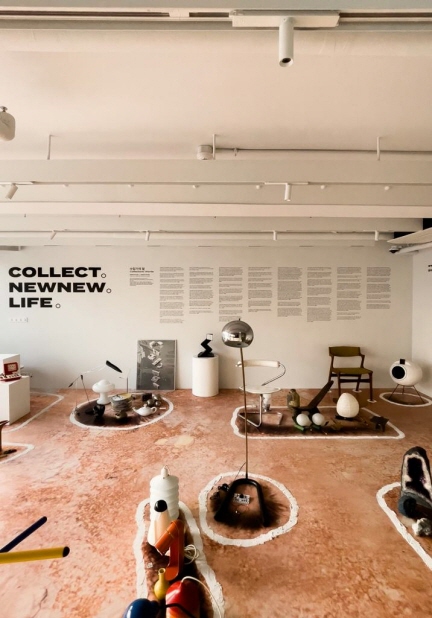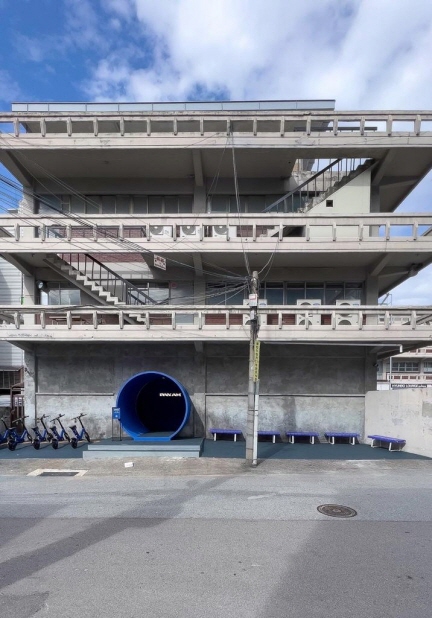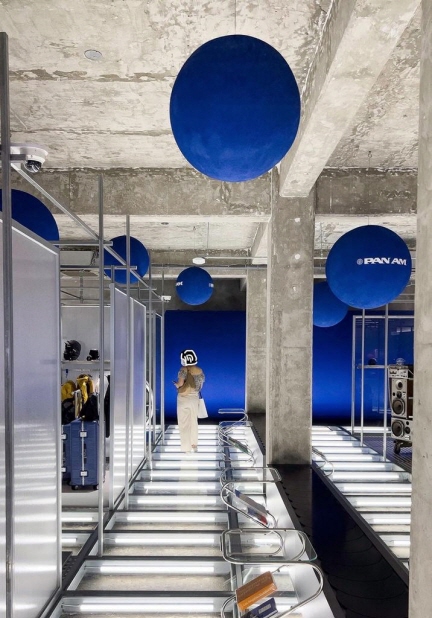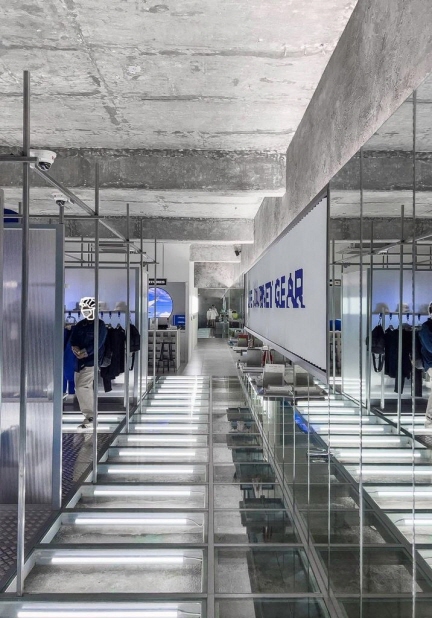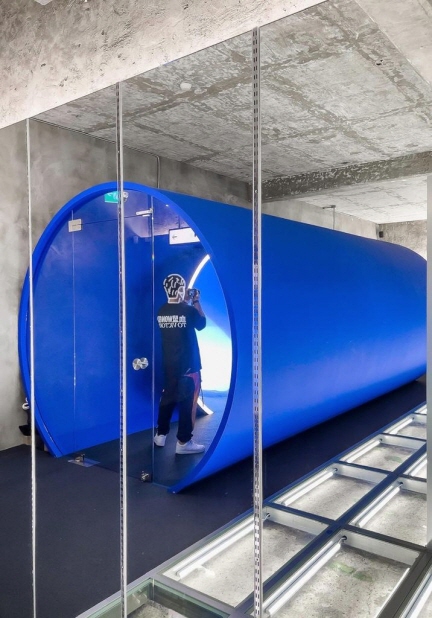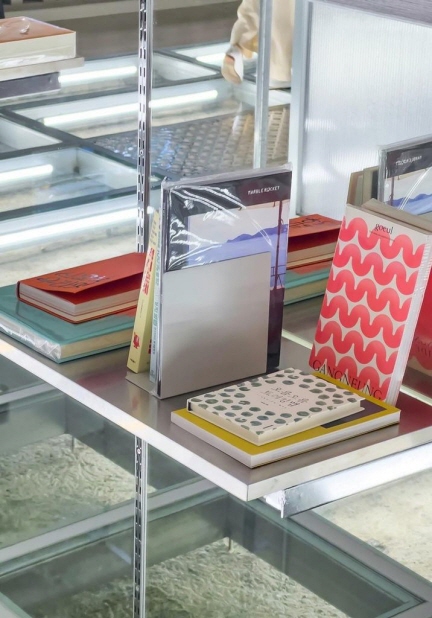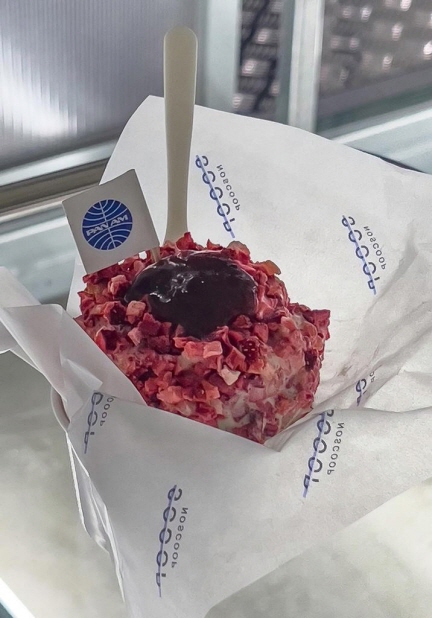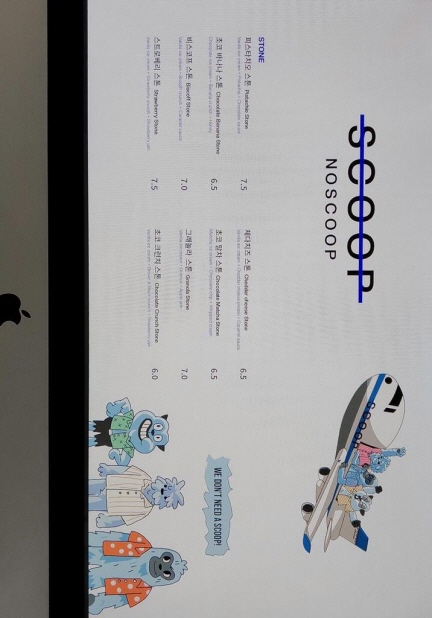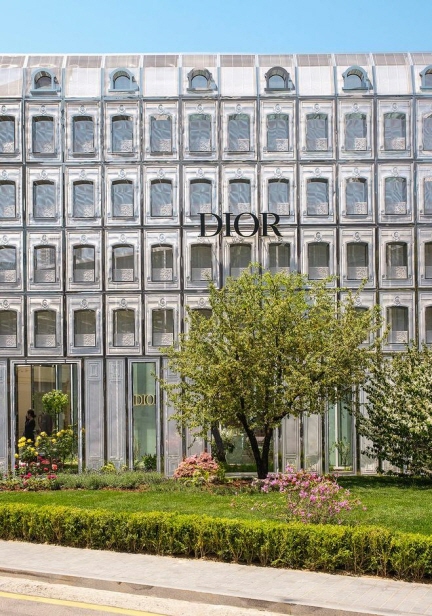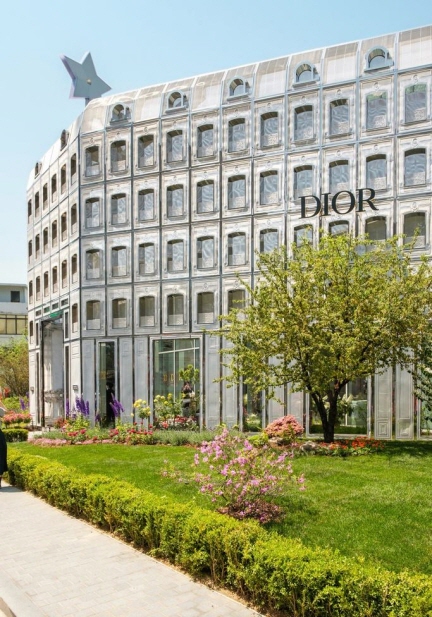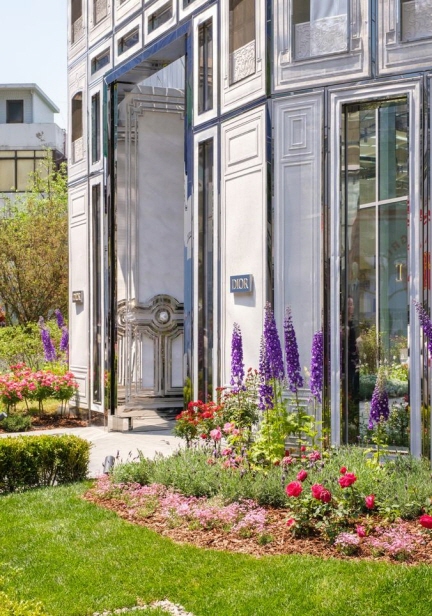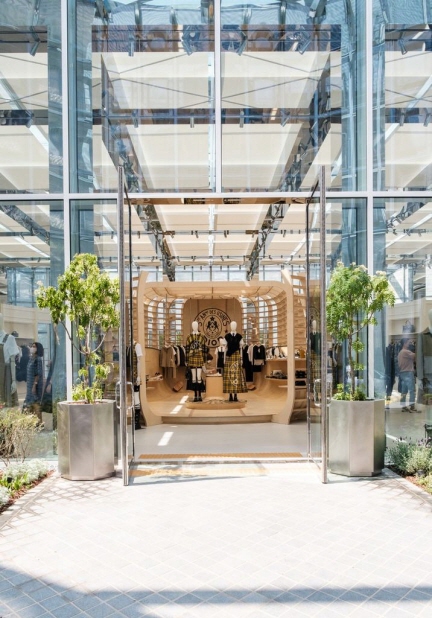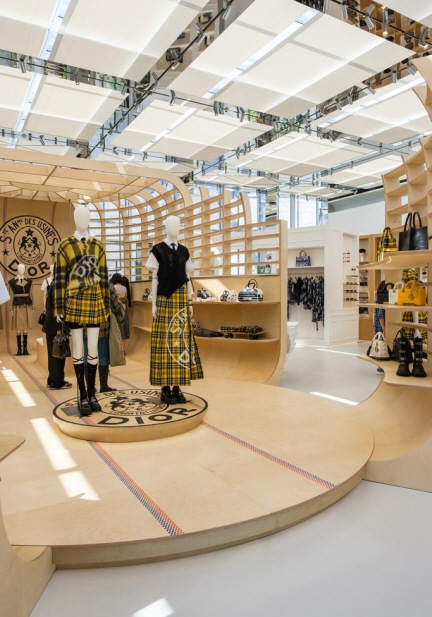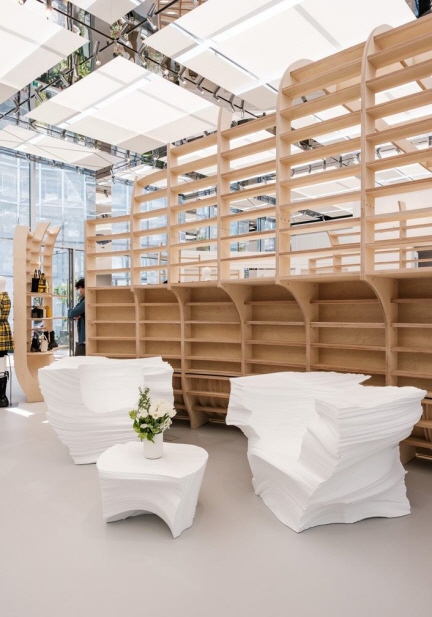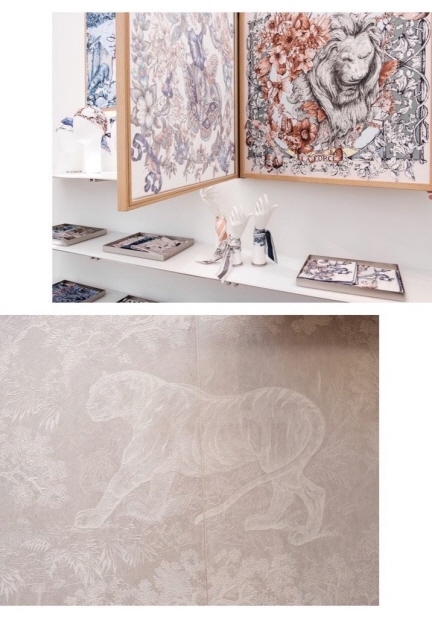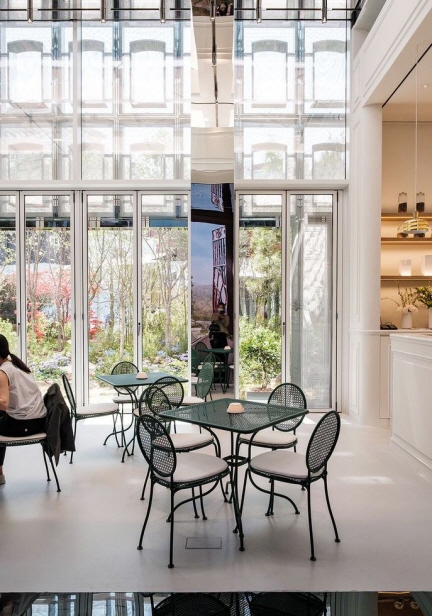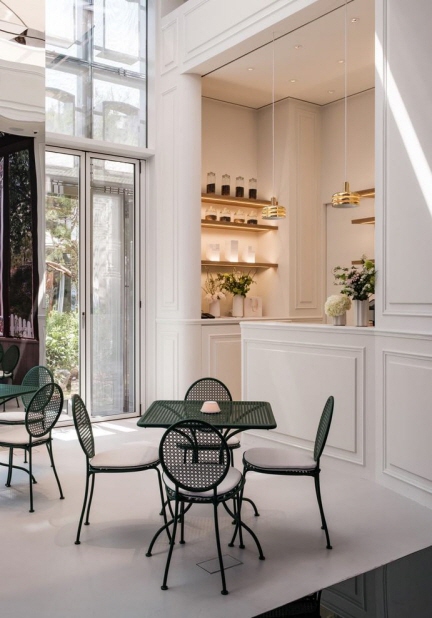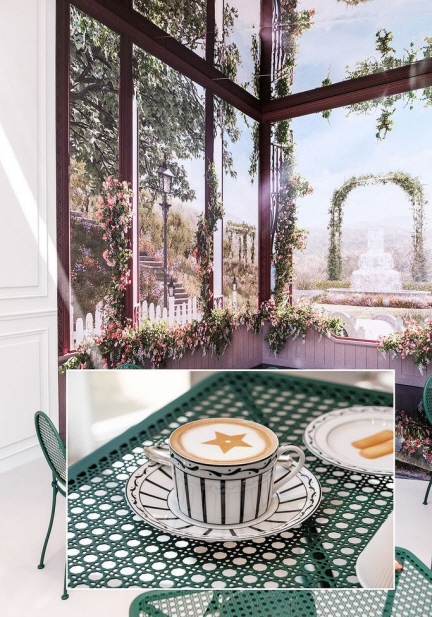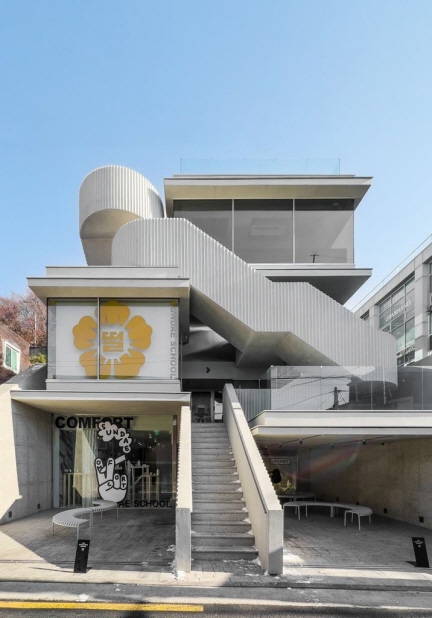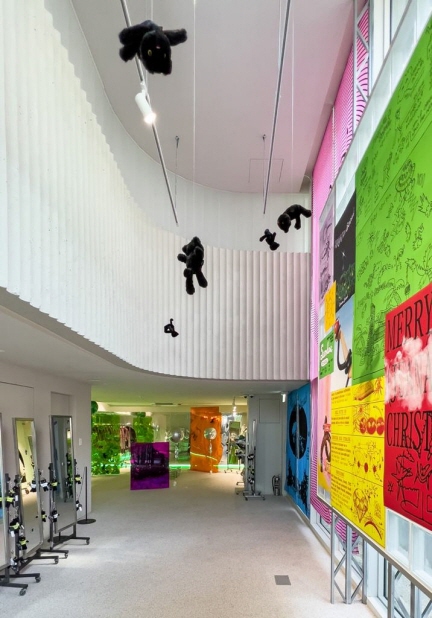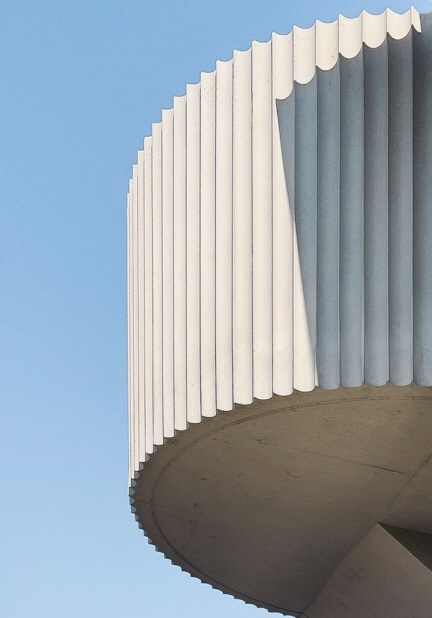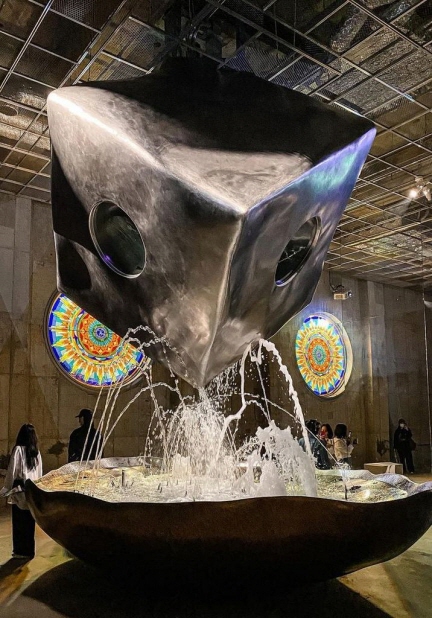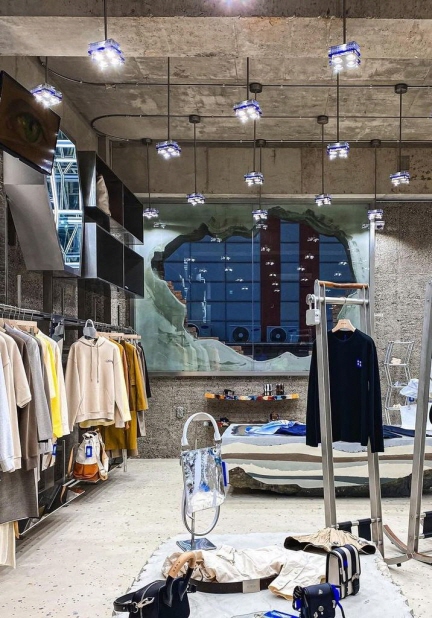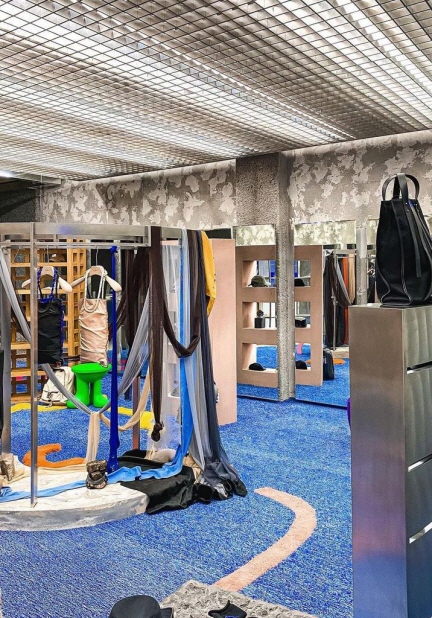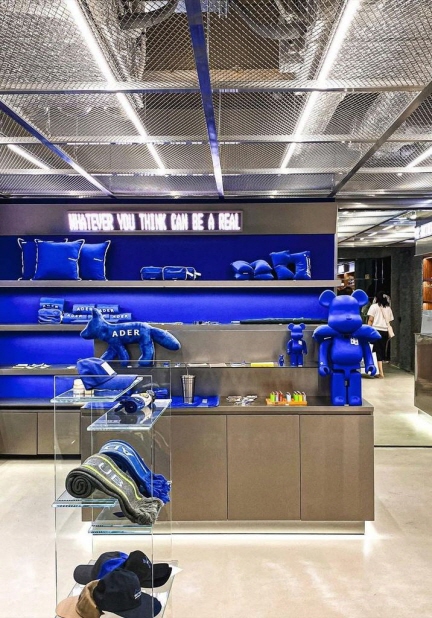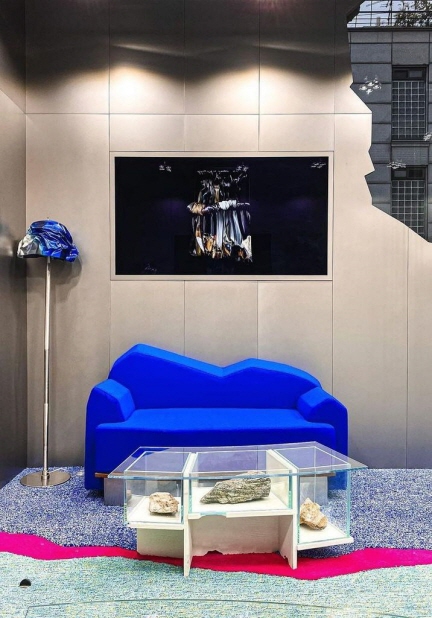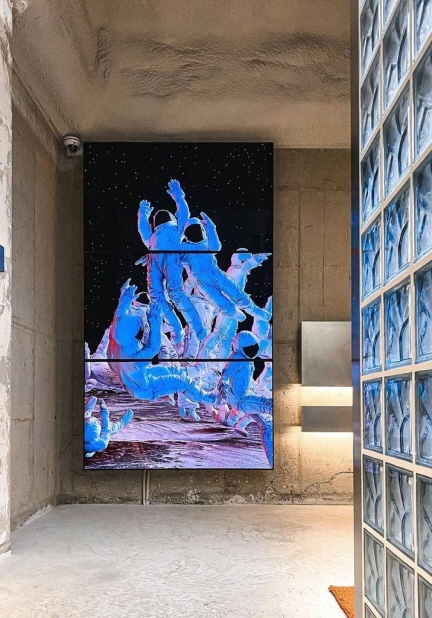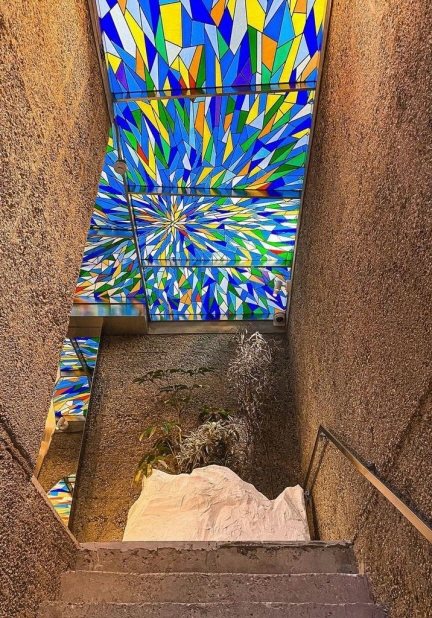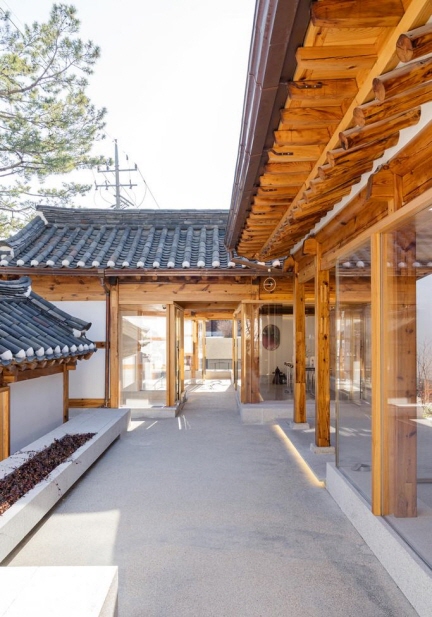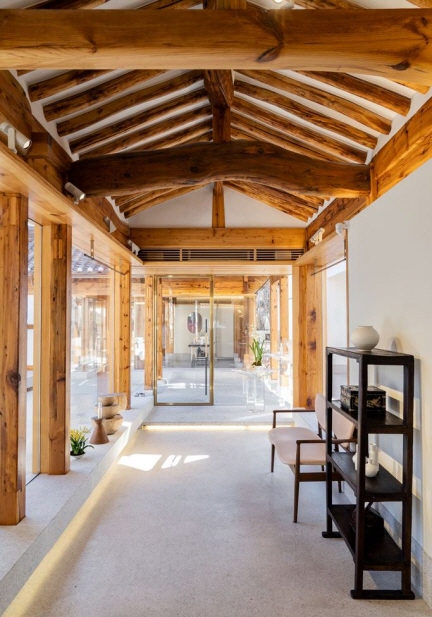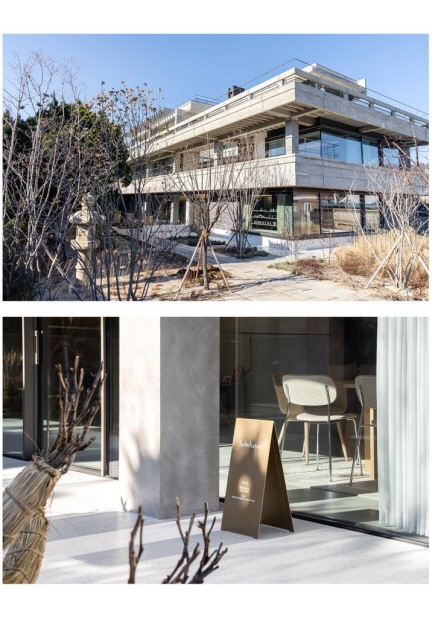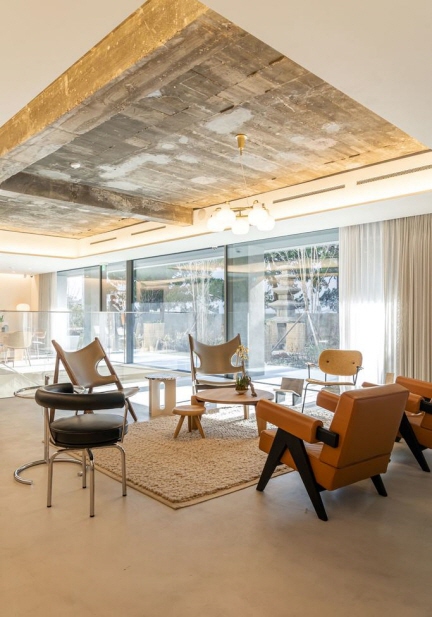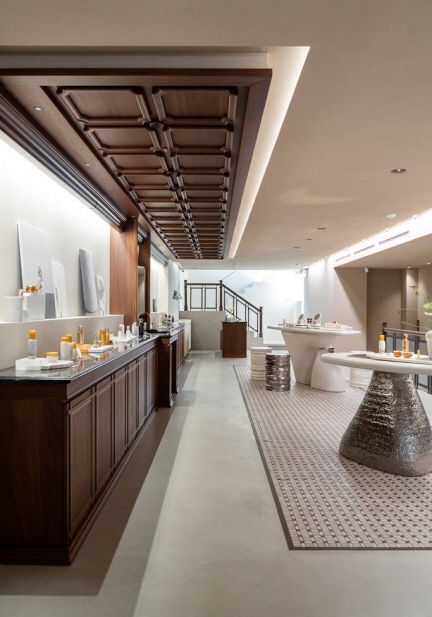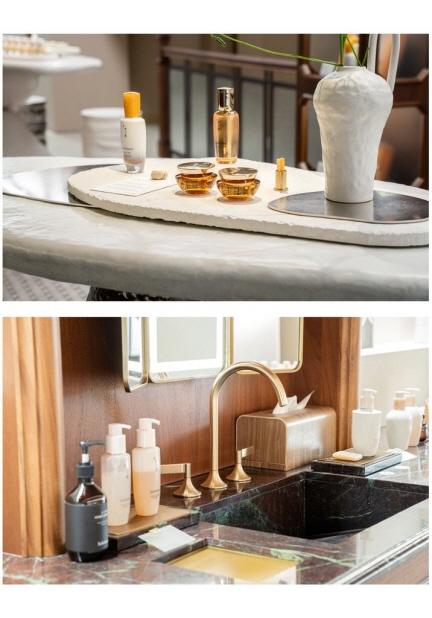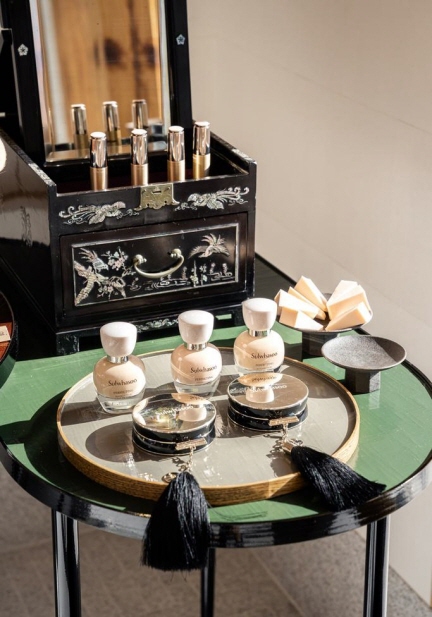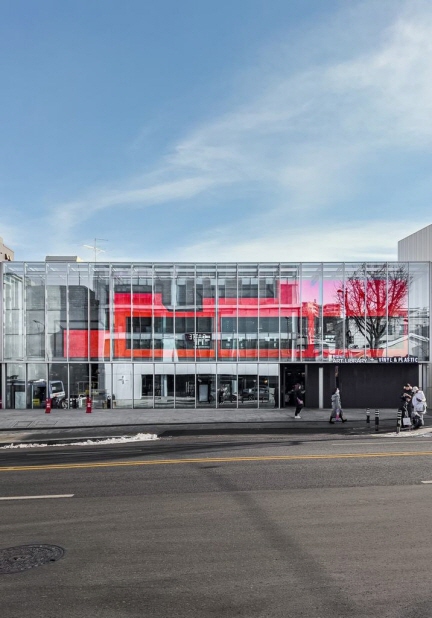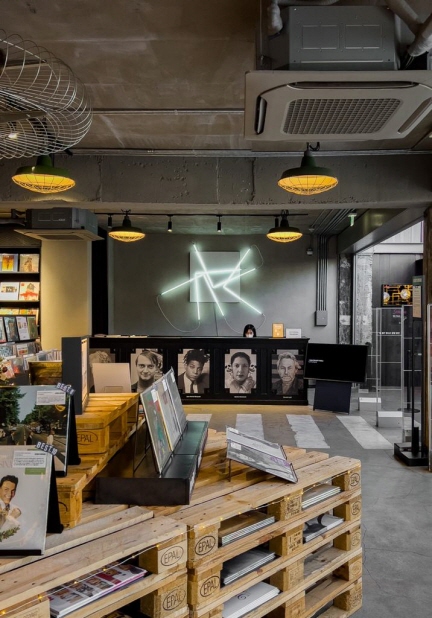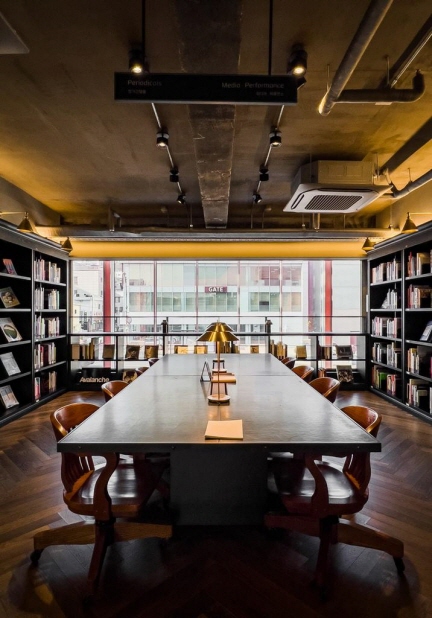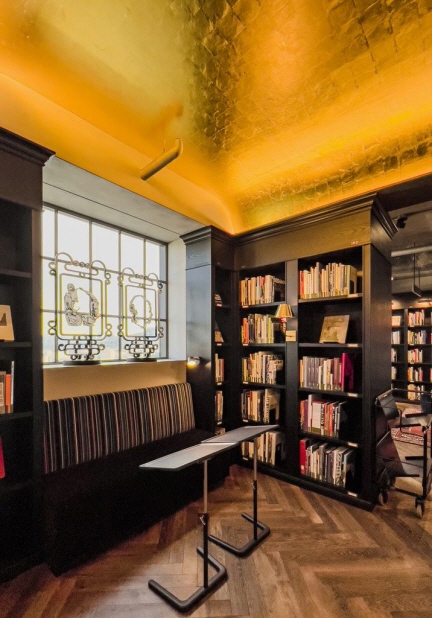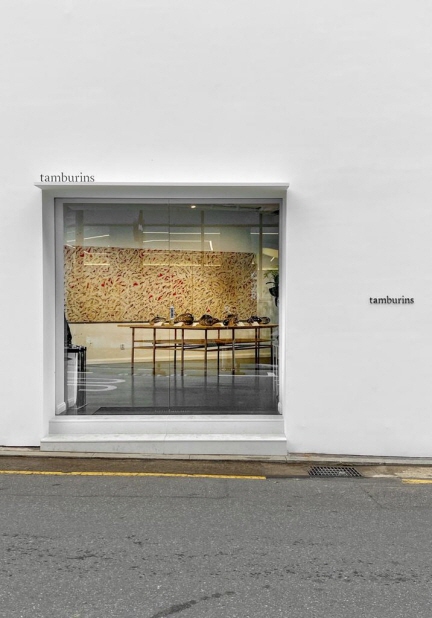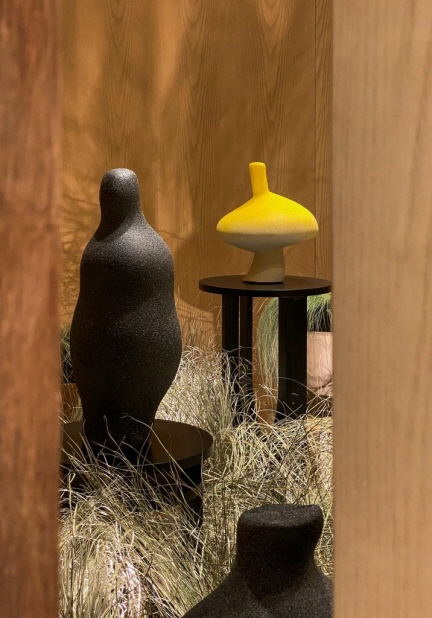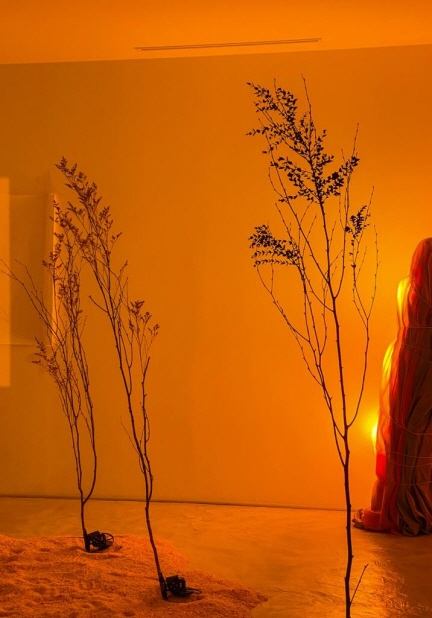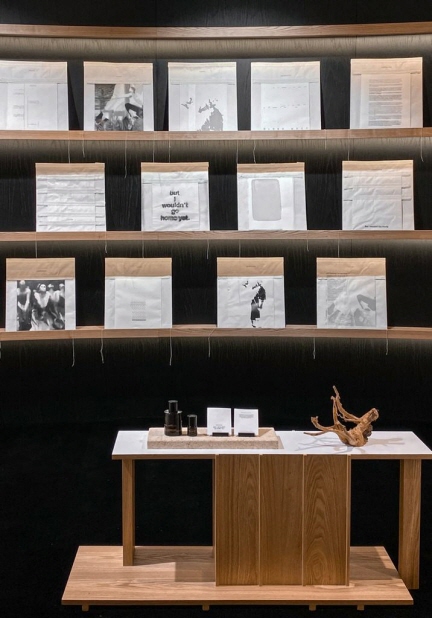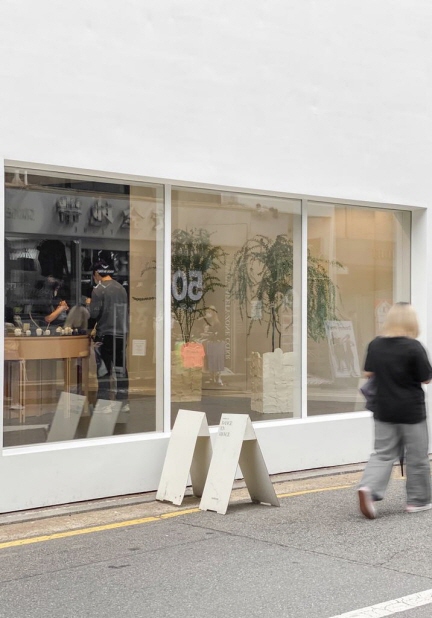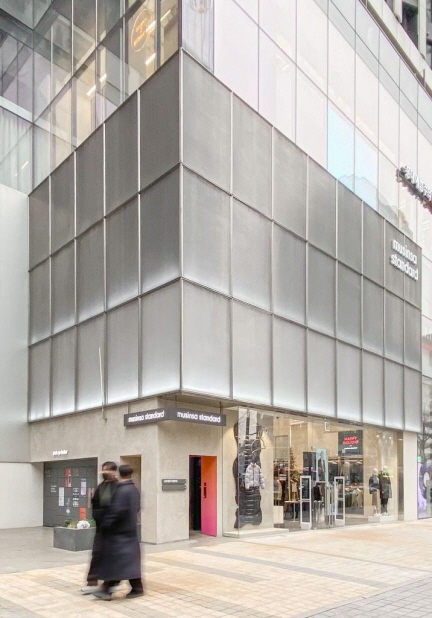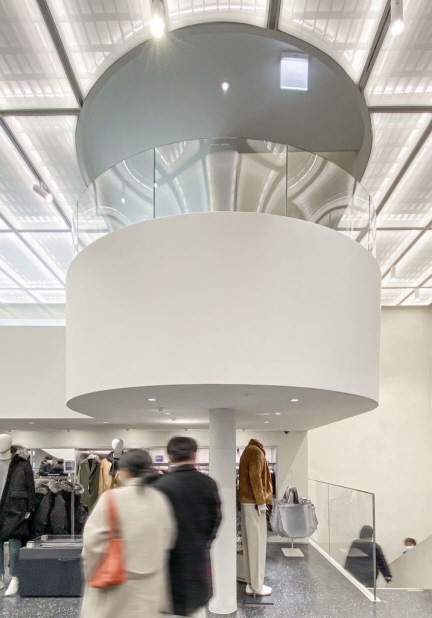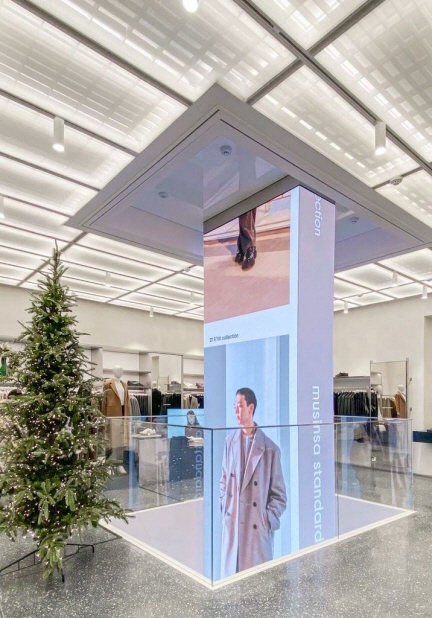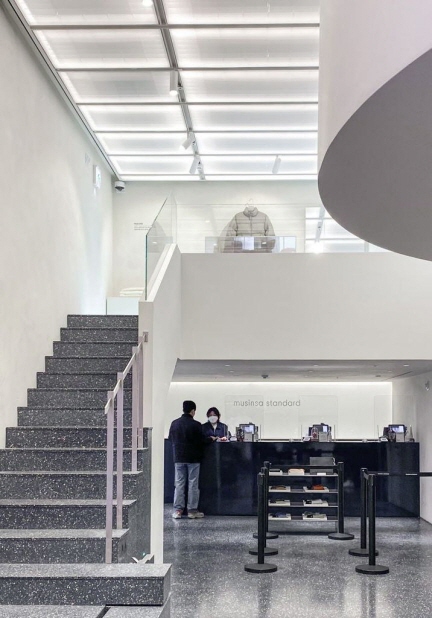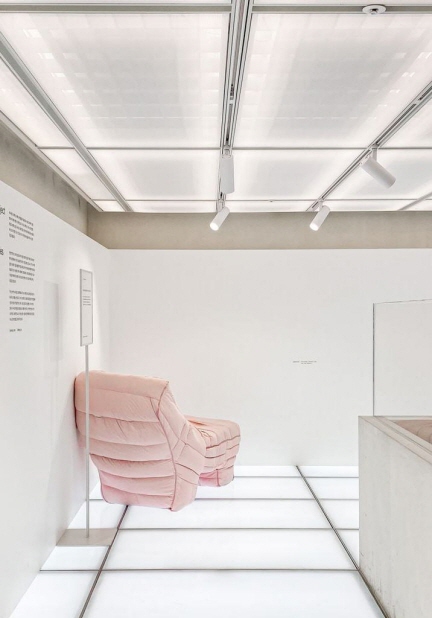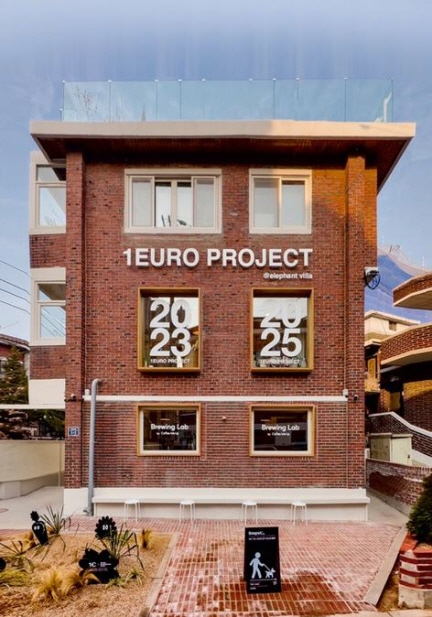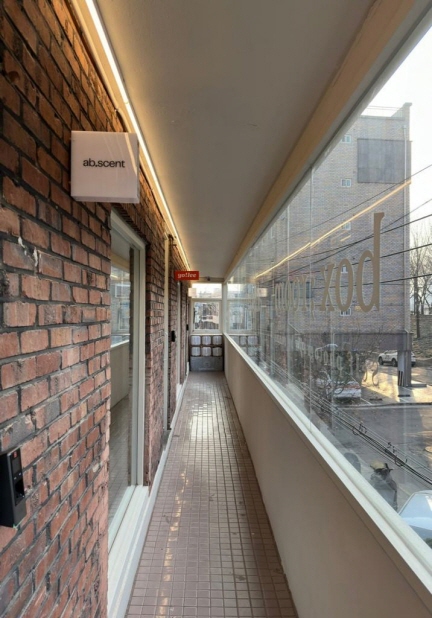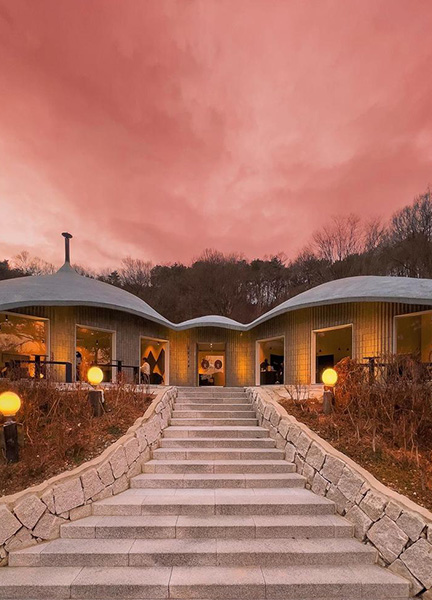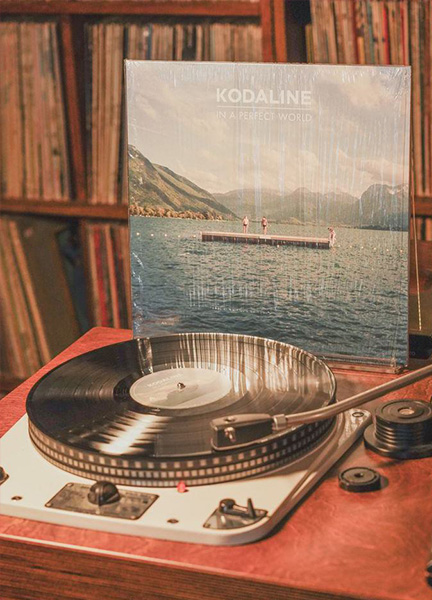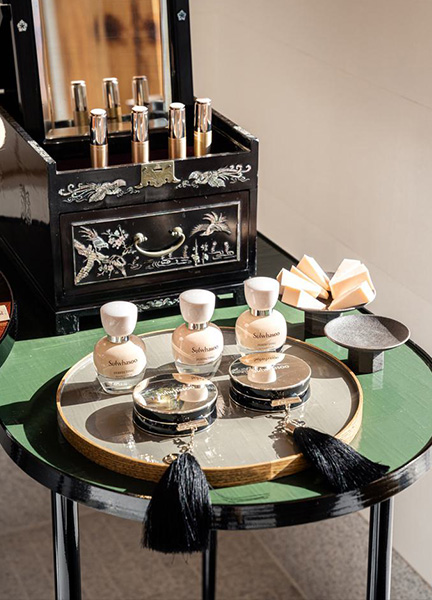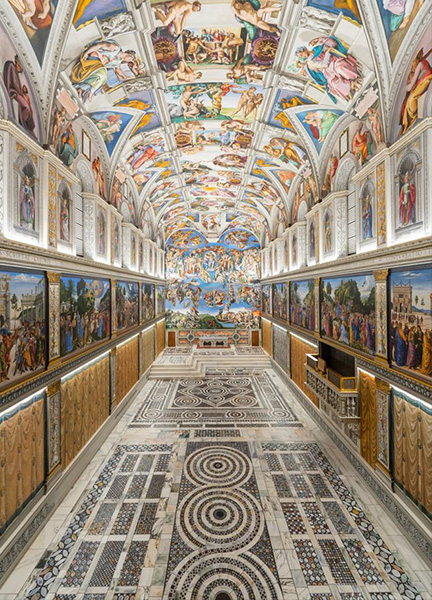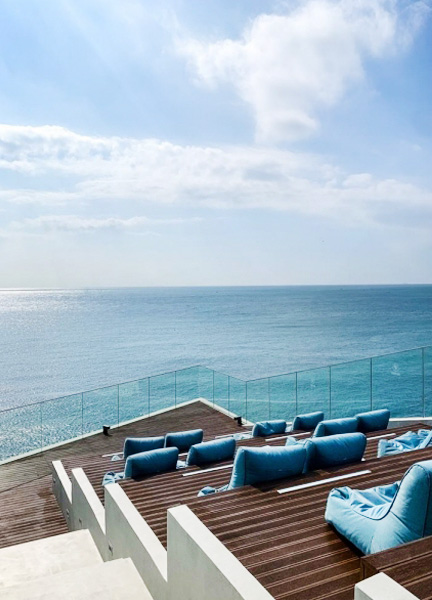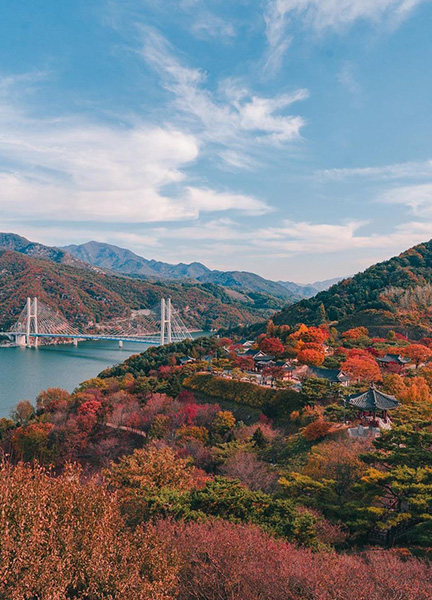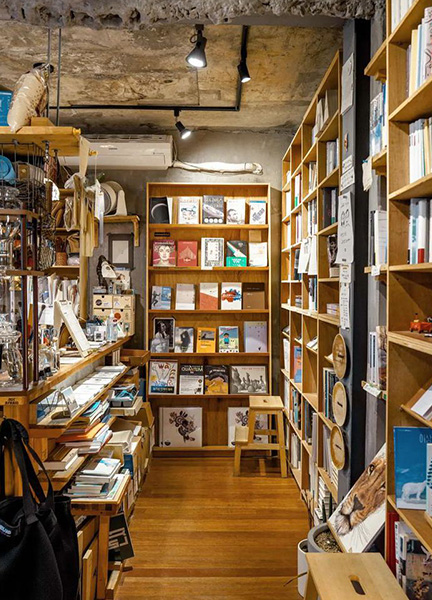the Coolest Places in Korea

11 Trendy Flagship Stores and Shops
- #Shop
- # Bookstore
@architectu
The Tower of Babel in Legend: Realization of the Imagination
The Tower of Babel is a legendary tower built by the ancient Babylonians, according to the Old Testament. Pieter Bruegel the Elder, a painter from the 1500s who lived in the Duchy of Brabant, drew the Tower of Babel (1563). What drew my attention was the picture itself rather than its religious meaning. The tower in the drawing resembles the space I'll introduce today. The Bible says that as people learned how to make fire and developed civilization, they tried to reach the heavens. So, God went down to make people use different languages and stopped the city's development. Therefore, the Tower of Babel looks incomplete in the drawing.
Expressing imagination through drawing and creating a story for it -- This is what comics do.
Comics are a popular culture everyone enjoys at least once during their childhood. When I was younger, I enjoyed many comics of various genres, from the classic Pokemon to Eunbi Kkabi's Once Upon a Time , Dooly, and One Piece, which was quite popular among those currently in their 20s and 30s. I was a big fan of comics during my childhood. In elementary school, I even went to the Comic World event held in BEXCO with my friends. And my love for comics has not ended there. Even when I read interesting books or write articles about the world, comics can become my inspiration. I was seven when I first saw One Piece, which is still ongoing, and I enjoy watching it. In addition, Korea is known for its strength in creating content, and comics are a significant part of it. Sweet Home, a Korean drama series aired via the streaming service provider Net*lix, originated from a Korean webtoon. Well-known webtoon writers, such as Calm Down Man and Joo Pearl, frequently appear on media channels. There are documentaries featuring the history of comics, and even Chungkang Comics and Animation Library is in Icheon. Likewise, comics can no longer be dismissed as something 'just for kids'. On the contrary, it is deeply rooted in our culture and is a driving force in creating new cultures.
I think Koreans' enthusiasm for the Marvel series, Western hero stories, is also in the same context. Graphic novels, Marvel stories, and various famous cartoons of different genres can be enjoyed as animation. Still, there is also a charm in reading them on paper at one's own pace.
There has been a space for comics since my childhood. Places called manhwabang, or comics stores, were generally located underground or on the second floor or above. Here you could borrow comic books and rent videos. I remember these stores as being rather dark and filled with the smell of cigarettes. Recently, a store chain, "Nol*," made up for those shortcomings and emerged in the market. However, reading comic books there doesn't seem to be widely recognized as a form of great popular culture. Furthermore, with the rise of Internet streaming services, the number of people visiting offline comics stores has decreased, and such places are gradually losing patronage.
As a comics lover, it was very regrettable to think such experiences would disappear.
-
Fortunately, I found a way to revive all of the above experiences. It is a simple space: a bookstore featuring comic books, graphic novels, and magazines of various genres. There are also more serious books. But looking around the place, you will see that old thin comics are displayed together. Plus, various genres of music are played here. Sometimes you can hear pop music and at other times, classical pieces. More interestingly, a cafe, one of the most common spaces we visit nowadays, is on the third floor. There is also a bar where you can order whiskeys and other liquors. There, you can see a "divine" space which might be somewhat similar to the inside of the Tower of Babel. The space I encounter right after entering it looks beautiful, with books and comfortable chairs, which may be even more comfortable than seats in a library.
-
With comics, the beauty of the space I discover while walking up the spiral stairs, whiskey, and the sunlight shining onto the top floor closer to the sky, I can enjoy the classical music and books I want.
-
'Beautiful space, new scenes, great reviews’
The space that was once only imaginable or in legends has now appeared in reality.
Undoubtedly, it is the most beautiful place I visited in 2022. The facial expressions of those who sit and enjoy their books here say it all.
This is GRAPHIC in Gyeongnidan Street, the 'holy land' of graphic novels I have imagined.
- Address: 33 Hoenamu-ro 39-gil, Yongsan-gu, Seoul
- Operating hours: 16:00-23:00 on weekdays, 13:00-23:00 on weekends [Closed on Mondays]
- Admissions: 15,000 won
- Attached is the alcoholic beverage menu
- #Culture Complex
- # Shop
- # Cafe
- # Restaurant
- # Exhibition
- # Museum
- # Bar
@architectu
Seongsu, a living history book
An industrial complex in Seongsu, which naturally developed in 1960, grew when the Monami factory in Mapo moved there in 1963. While Korea achieved unconventional residential development, particularly with the massive construction of apartments, Seongsu has taken a unique feature where industrial and residential areas coexist. There were over 400 handmade shoe workshops and several factories related to automobiles and printing. A district where residential, industrial, and commercial areas are mixed together, Seongsu has preserved Korean history intact.
-
It is often said that naturally developed areas are good places to live. In particular, the city of Busan, which is not a planned city, is unique, where residential, commercial, and industrial spaces coexist. How the city was formed is somewhat similar to medieval cities. In the past, the Romans formed fortress-type cities by utilizing the natural terrain to avoid the invasion of the Ottoman Turks. Similarly, Busan rapidly grew by refugees in the modern history of Korea. More specifically, Gamcheon, Yeongdo, and Nampo areas are more relevant cases. Located near residential areas, they have essential stores and facilities for daily life, such as hardware stores, butcher shops, hair salons, key shops, laundries, shoe repair shops, post offices, supermarkets, and transportation. Geumjeong-gu, Busan, where I spent my childhood, was the same. Daily activities taking place on city streets are meaningful. Transactions with street vendors can be a good educational opportunity for children to develop their social skills. The children of regular customers are within a safety net, similar to areas where there is CCTV, because the merchants know them well.
Nowadays, it is hard to find such things in Seoul. Maybe Seongsu is the most similar case. Mapo, Yongsan, and Seongdong areas are to be redeveloped, but I hope cities focus more on the sustainability of naturally developed areas. Considering only commercial aspects might make a majority of city residents poor in terms of experience.
Cities without heart-warming experiences are nothing better than empty deserts.
What should be preserved is a city's organic vitality. Some cities were developed without plans to have a mixture of residential, industrial, and commercial areas. Still, residents and those who visit the cities have found ways of living within the current structure of cities.
Whether planned or not, it is obvious that cities do not always develop as expected.
When I talk about urban experiences, I focus on diversity. It is a widely known scientific fact that an imbalance in the ecosystem leads to extinction. Space is an amazing organism that changes over time, so an imbalance in "species" can cause the extinction of experience with space. Seongsu is in a precarious situation in the current era when high-rise buildings are preferred. However, fortunately, people are adding modern value to the area.
Nowadays, cultural spaces are open in the area in addition to residential, commercial, and industrial spaces, further strengthening Seongsu's unique urban feature that has existed for a long time. Maybe Seongsu is more like a history book where all the episodes related to Korea's development are written. This is what I think about this place.
Several different episodes gather to create another episode. This is how cities develop.
#LCDCSEOUL inspired by LE CONTE DES CONTES by Giambattista Basile
-
Program - Exhibitions, café (EPHEMERA), bar (BAR POSTSCRIPT), pop-up space (DOORS _ exhibition and brand showroom), and shop [fashion and accessory shop LE CONTE DES CONTES]
- Address: 10 Yeonmujang 17-gil, Seongdong-gu, Seoul
- Operating hours: 11:00-21:00 (Hours vary by store. Please check hours on Instagram! :))
- Parking space available
- Design _ Samuso Hyojadong (architect Seung-mo Seo)
- #Shop
@architectu
Catch Me If You Can
It is a very famous movie, starring Leonardo DiCaprio and Tom Hanks. DiCaprio plays a brilliant con artist who uses various disguises, eloquent language, and forgery to outsmart the FBI agent, played by Tom Hanks. The main disguise DiCaprio uses is the role of a co-pilot for Pan American World Airways, also known as Pan Am, and even manages to escape from the FBI agent’s pursuit.
This airline Pan Am is also the name of the space that I would like to introduce to you today.
Pan Am may not be a very familiar name to the younger generation, including teenagers, but it is a well-known airline to older generations, including myself. It was a major airline that had appeared in various popular dramas and movies. It was even considered the world's top airline. It started as an air transportation business connecting the United States and Cuba in the 1920s, and after World War II, it grew into a passenger business and thrived until the 1990s. (Unfortunately, the airline went bankrupt, and only the license for its logo remains)
Even if you didn't know the existence of this airline, its logo is widely known. The logo features a blue globe with the abbreviation "Pan Am" over it. You might have seen this logo at least once, even if you didn't know it was an airline.
A Korean company has bought a license to use the logo of the brand that once connected people to other countries and expanded the scope of life. The company has transformed the brand into a 'lifestyle' brand. The revived brand logo has found its place in Seongsu-dong, the hottest spot nowadays, to broaden its reach to different aspects of life.
-
I’ve already written previously a lot about how Seongsu-dong was created to have the current conditions, and today, I would like to elaborate more on the area.
This Seongsu area is unprecedented and unique, with various spaces, such as cafes, restaurants, bars, exhibitions, pop-up stores, flagship stores, residential areas, industrial areas, and offices. So a majority of activities that take place in a city can be seen here (except for large commercial spaces and public spaces). In another aspect, it can be a great place to emphasize a certain space's unique identity amid such variety.
Industrial complexes occupied a majority of the space for a long time, and recently abandoned factories or warehouses were remodeled into new spaces. One great example is PAN AM Seongsu Flagship Store.
It transformed the former airline brand logo into a lifestyle brand and adopted several elements inside the building that can reveal the brand identity. Once you enter through the blue cylindrical entrance inspired by the brand's signature blue, you will find an old concrete piece encased in glass and angled pipes, symbolizing the vibe of Seongsu-dong. Clothes are hung on unique hangers commonly used in the aviation industry, and suitcases are displayed next to the clothes. An adjustable rack system installed here displays books. The innermost part of the space is the highlight. Photos of the sky in a round frame make visitors feel as if they were flying. Currently, they sell desserts from a brand called SCOOP, but they also plan to serve coffee in the future. Interestingly, the dessert place's seating area resembles an airport's luggage conveyor belt. The space continues incorporating scenes and objects related to aviation while creating harmony with clothing.
-
The cafe applied the vivid main color to emphasize the brand logo's presence further.
-
In that sense, just like the character in the movie who constantly changes his appearance and disguises himself as someone else, the space has a witty sense of humor, maintains its identity, and moves towards a world where no one can catch it.
-
Visiting this witty space will be quite enjoyable. And make sure to keep up with where the space is heading.
"Catch me if you can." This is PAN AM Seongsu Flagship Store.
- Address: 1F, 89 Yeonmujang-gil, Seongdong-gu, Seoul
- Operating hours: 11:00-20:00
- Please check the following menu
- Parking not available
- #Shop
- # Cafe
@spot_editor
The moment when Seongsu-dong is instantly transformed into Paris
The DIOR Seongsu, which opened on May 1, 2022, was built in a reduced form of the Christian Dior flagship store, 30 Montaigne in Paris, France, giving the illusion of being on the actual Rue Montaigne in Paris rather than in Seongsu.
The area around the store is filled with various colorful flowers, lush trees, and grass, giving the impression of experiencing a fairytale-like French garden.
The store interior maximizes the beauty of the products, furniture, and interior design, thanks to its high ceilings and sunlight streaming in from various locations. The walls are decorated with Korean paper hanji featuring Dior's unique toile de Jouy pattern, and the artistic and artisanal spirit is further enhanced thanks to works by artists Kwang-ho Lee and Jeong-hwa Seo.
In addition, a small DIOR café is found in one corner of the store.
A well-lit window on one side of the wall offers a garden view, while the other walls feature media art depicting a mysterious garden of the rose, which symbolizes the brand, and the Granville mansion where Christian Dior spent his childhood.
* I waited for the opening day but failed to make a reservation, so I decided to visit there on a weekday afternoon. Surprisingly, there weren't many people waiting. I entered my phone number on the virtual waitlist and waited for about an hour. The cafe accommodates walk-ins based on availability, and I had the opportunity to visit both the store and the cafe without a prior reservation.
- Address: 7 Yeonmujang 5-gil, Seongdong-gu, Seoul
- Instagram: @dior
- Use the DIOR Seongsu app to make a reservation (Reservations are closed for May).
- #Culture Complex
- # Shop
- # Cafe
- # Dessert /Bakery
@_hyogeun_
"An object that blurs boundaries" -COMFORT Seoul
The steps that indicate the "hierarchy" of floors divide the space, but the staircase formed by the steps blurs the boundaries of the two floors again. COMFORT Seoul adds aesthetic elements to the staircase as an "object," thus breaking down the boundaries.
COMFORT Seoul sits in the middle of Namsan Mountain, with Duteopbawi-ro Road in front and Sowol-ro Road in the back. The 15-meter height difference, which is equivalent to the height of a four-story building, gave the two roads different characteristics. One is an alley used by residents, while the other is the wider road used by outsiders; the road connecting the building spaces versus the road connecting the building to the city, or a quiet space versus a lively space.
Generally, buildings built on a sloped area use the rooftop as a parking lot and make the ground floor the main entrance or vice versa, clearly distinguishing between the lower and upper roads. However, here, the rooftop, which is an observatory, starts to break down boundaries, and the vertical axis of the staircase maximizes the effect of breaking down the boundaries, attracting people upward and downward. This is how the building harmonized the two contrasting roads.
The staircase in the middle of the first floor has a strong presence. The staircase divides the space into "deep" and "shallow" areas and winds up, creating divided and protruding masses on different levels. The dynamic staircase sometimes acts as a screen, covering houses in front of the building. As the staircase reaches the rooftop, the buildings "disappear," and the sky is visible. The staircase "steps aside" to allow visitors to enjoy the view of Huam-dong. Although each floor's character is defined by its relationship with the staircase, the blurred boundaries between the two roads bring people together and add diversity to their experience of the space.
The rhythm that began from the staircase extends to the surface of the stairs. The vertical curve pattern created by a concave formwork creates both verticality and rhythm, symbolizing the dynamic changes of Seoul. The staircase's characteristics align with the building, a multipurpose cultural space where diverse people gather to create stories.
COMFORT Seoul's aesthetic elements combined with functionality add to the dynamics of the entire building. It will become a focal point that attracts people and makes the surrounding area vibrant.
Architecture: BOUNDLESS (@boundless_korea)
Photo and article: Hyo-geun Shin (@_hyogeun)
-
#A space for a good experience
- Address: 358-144 Huam-dong, Yongsan-gu, Seoul
- Operating hours: 11:00-21:00 (Closed on Mondays)
- #Photo Zone
- # Culture Complex
- # Shop
- # Cafe
- # Exhibition
- # Museum
@my_season___
The connection between the space-time created by material and light, ADER SPACE 3.0 FLAGSHIP STORE in Sinsa
It comprises special sections on six floors, including TONGUE PLANET cafe on the fourth floor and a rooftop on the sixth floor, other than the shop area.
Using a one-way path, visitors can walk up to the sixth floor and then use the elevator to come down to the first floor. At the final point, there is a lifestyle shop and an exhibition featuring symbolic objects of ADER ERROR.
- Address: 31 Dosan-daero 11-gil, Gangnam-gu, Seoul
- Operating hours: 13:00-21:00
- Valet parking available
- #Nature
- # Photo Zone
- # Culture Complex
- # Shop
- # Exhibition
- # Museum
@bongtographer_
Coexistence of tradition and modernity, # Sulwhasoo Flagship Store
In Bukchon, one of the most well-known hanok (traditional Korean house) villages in Seoul, there is a space that combines a hanok from the 1930s and a Western-style house from the 1960s.
This space for Sulwhasoo preserves the hanok -style pillars, crossbeams, and roof, exuding both timeless beauty and modern elegance.
The tastes of the past and the beauty of the present coexist, making it one of the most valuable spaces.
This is a must-visit if you want to experience the authentic charm of Korean culture and the harmonious coexistence of hanok and Western housing styles.
- Sulwhasoo Flagship Store (@sulwhasoo.official)
- Address: 47 Bukchon-ro, Jongno-gu, Seoul
- Operating hours: 10:00-20:00 (Closed on the first Monday of each month)
- #Culture Complex
- # Music
@_hyogeun_
"Like a spoonful of vitamins in bitter medicine" - Hyundai Card Art Library
Starting with the Design Library in 2013, Hyundai Card launched the Music Library, Cooking Library, and last year, the Art Library. Each library launched with a different theme generated much buzz, which piqued my curiosity.
'Why is Hyundai Card obsessed with libraries?'
A Prescription for Modern People
A library is a leisurely space filled with analog activities. Exploring and reading books that capture your interest cannot be rushed. Hence, it's impossible to shorten the time required. As a result, finding and reading books naturally requires taking the time to do so. For modern people living busy, fast-paced lives, having an abundance of time is essential, and Hyundai Card introduced the library as a prescription to fulfill this need.
A spoonful of vitamins in a prescription."
Medicine is bitter, and healthy food is often tasteless. Companies need to generate profits, so they must attract customers. However, a conventional library concept alone cannot attract customers. That's why Hyundai Card added something special. By planning each library with different themes, they offer books that can only be read and experienced in that particular library, with expert book curation and even rare books that are hard to find. The library experience allows people to read and experience something special that is difficult to find in everyday life, adding a sense of leisure and attracting people. The result was a huge success. The fact that the Art Library opened last year proves that the Hyundai Card Library was a successful venture.
-
Why I keep an eye on the Hyundai Card Library
The Hyundai Card Library is a business item, so it does not seem directly related to architecture. But considering Hyundai's love for architecture, the story is different. As a design-savvy company, Hyundai has a keen eye for architecture. Every time the company designs a space for a project, it carefully considers the project concept, location, and regional context for the building. As a result, the building and program closely tied to the location create synergy, and carefully planned architectural details make the space an attraction. They know very well the power that space can give.
Is it a coincidence that the Art Library is located right next to the Music Library?
Hyundai Card, which has a keen sense of architecture, must have chosen Itaewon for a reason. In the past, Yongsan had the geographical advantage of being the hinterland of the ancient capital Hanyang (currently Seoul) and was easily accessible to the south of the river. Naturally, it was a military stronghold, and during the Japanese colonial era, a part of Yongsan was occupied by the Japanese army, and after liberation, by the US army. The presence of the US military brought leisure and entertainment facilities to Itaewon, making it one of the first neighborhoods to be exposed to foreign cultures. Thanks to this historical background, Itaewon has become a multicultural town with several art and cultural facilities, including galleries.
What about the newly opened Art Library?
The library, which Hyundai created, boasts a clear atmosphere and concept that the company wanted to convey. When you visit the library, it feels like stumbling upon a valuable book in a cozy small-town bookshop while wandering through the streets of a European city.
The building's facade is covered in glass, breaking down the boundaries between inside and outside and attracting people to the inside. The spiral stairs and elevator positioned in the middle of the space draw people's attention. From the moment you swipe your card and go up, the atmosphere changes 180 degrees. The modern exterior gives way to classical interior design that blends well with the Art Library, which mainly features Western art.
The music from the LP shop flows through the atrium covered in glass on the front of the building. Daily life and music become one as the boundaries are broken down, allowing people to concentrate on books and enjoy some leisurely hours.
-
-Photo and article: Hyo-geun Shin (@_hyogeun_)
-
-The second floor of the building is the Art Library. Only Hyundai Card holders and DIVE app members can enter the library.
-
#A space for a good experience
- Address: 2F, 248 Itaewon-ro, Yongsan-gu, Seoul
- Operating hours: Tuesday to Saturday: 12:00-21:00 / Sunday: 12:00-18:00(Closed on Mondays)
- #Shop
@_hyogeun_
"Scent and memory"
-
Scent awakens forgotten memories. To me, the scent of gardenia reminds me of a certain moment.
-
In May or June, the gardenia flowers bloom in the corner of the apartment complex near my house, emitting a strong fragrance signaling their presence. Although there are not many flowers, the scent spreads to the entire apartment complex so I can smell the scent from the stairs in front of my house. Unlike other flowers, the scent of the gardenia is rather heavy and moist , but it is not unpleasant. Rather, I would describe it as a comforting scent that embraces me.
-
I have smelled the scent around this time since high school, so the scent reminds me of my high school days.
We all have had similar experiences related to scents, though situations vary. It could be the fragrance of a perfume you smell while walking on the streets that reminds you of someone or catching a scent carried by the wind that brings back memories of a specific place.
The space I will introduce this time is the 'TAMBURINS Flagship Store' inspired by the power of scent.
Usually, stores that sell perfumes or diffusers display their products along with scent strips, allowing customers to try them out. However, the TAMBURINS Flagship Store goes beyond this by creating a space inspired by the fragrances of their products to evoke memories in visitors.
The store realized various fragrances through several different elements: sculptures that remind people of woody notes and warm earthy scent; a space decorated with wooden materials that evoke the gentle pine aroma; and a space painted in red that allows one to feel the energy of the earth.
Although vision, among the five different senses, holds the greatest importance to us, it doesn't mean that the other senses are not important. The interaction between the different senses can create synergistic effects, and the combination of sight and smell, in particular, can have a tremendous effect. TAMBURINS Flagship Store seems to understand this point.
I hope you visit this place that offers different spaces inspired by different scents.
-
#A space for a good experience
- Address: 44 Apgujeong-ro 10-gil, Gangnam-gu, Seoul
- Operating hours: 12:00-21:00
- #Shop
@_hyogeun_
"A touch of style to the basics"
-
If someone asks me to recommend an online multi-brand fashion shop in Korea, I would definitely choose Musinsa. Almost all fashion-related brands, from luxury to emerging brands recently launched in the market, are found on this platform. So no matter what style you pursue, visit the website, and you can find the product you want with just a few clicks. In addition, the platform recommends similar products to what you have chosen and even shows you coordinated outfits that go well with them. From a consumer's perspective, it is an incredibly convenient platform.
However, while platforms like the above are a paradise for those interested in fashion, they can only add confusion for fashion novices. The sheer number of categories and products and the abundance of brands can be overwhelming for beginners who have not yet established their style. I guess that’s why Musinsa recently created a new brand, Musinsa Standard, targeting these people. The brand's design reflects seasonal trends but is practical and understated rather than flashy, offering versatile must-have items. So, fashion beginners can approach the brand without a burden and gradually find their own style.
Hearing the news that the brand opened an offline store, I was curious how Musinsa Standard would translate its practical but stylish image into their offline space.
This store found the universal solution that suits almost anybody's taste. The exterior is plain, and the white walls make the products stand out. However, Musinsa Standard differentiated itself from typical SPA brands in store layout by reflecting the brand's practical but stylish characteristics. Its unique style is found in the staircase handrails, lighting, vertical displays in the middle of the store, and the mezzanine space.
The most notable part is the use of a mezzanine level. Instead of simply placing stairs to lead customers to the upper floor, the brand utilized the mezzanine to create a display area and give a sense of openness with a clear view of the first floor. The differing height and widths of the floors create a diverse spatial experience.
The architectural design of a space for a particular brand should reflect the brand's style. It may be easy to design a space for brands with a strong identity but doing a store design project for a brand like Musinsa Standard, which focuses on staying true to the basics, is not a simple task. Despite the challenge, the brand managed to create a space that effectively represents its identity, positioning itself as a prominent offline platform in addition to its online presence.
-
#A space for a good experience
- Address: 144 Yanghwa-ro, Mapo-gu, Seoul
- Operating hours: 11:00-21:00
- #Shopping Mall
- # Photo Zone
- # Culture Complex
- # Cafe
- # Restaurant
- # Dessert/Bakery
- # Tourist Destination
@architectu
1 EURO PROJECT
This is one type of urban regeneration method that was led by a government institution. It was adopted by the Italian government to preserve residential houses built in the medieval era and to protect cities "dominated" by the real estate market. In the rural village of Maenza in Italy, buyers are allowed to purchase an old house for one euro on condition of renovating it within three years and not selling it for five years. Young and adventurous people come in to expand new businesses or join the community, adding vitality to the cities that lack energy. Moreover, this project is quite appealing even to foreigners because they can become part of the community through the project.
Such a project is called an 'incubating project.'
However, the space I will introduce to you was not a government-led project. It was a private-led project that transformed an old brick building next to the Elephant Villa complex in Songjeong-dong, Seongsu, into the 1 EURO PROJECT. Various trendy brands launched here added a vibrant atmosphere to this once-tranquil community.
It is not an extravagant space but rather an attractive place. The new owners built their community, attracting diverse people.
This is not the end of the story. How the project will progress going forward matters. I look forward to seeing its future development.
- Address: 1-1 Songjeong 18-gil, Seongdong-gu, Seoul
- Operating hours: 11:00-20:00 (Closed on Tuesdays)
- Brands ㅣBOMARKET, SEOUL GARDENING CLUB, LUKAAL FUTURE SAPCE LAB, Bath, vedére, ab.scent, box ; room, yo! lee illyu, better earth, Brewing Lab, PINKWONDER, RUN derful, Baepet, ggulgundal, icion, Foodle, everyday, Keyo, ANTIQUE HOUSE
- Parking not available



